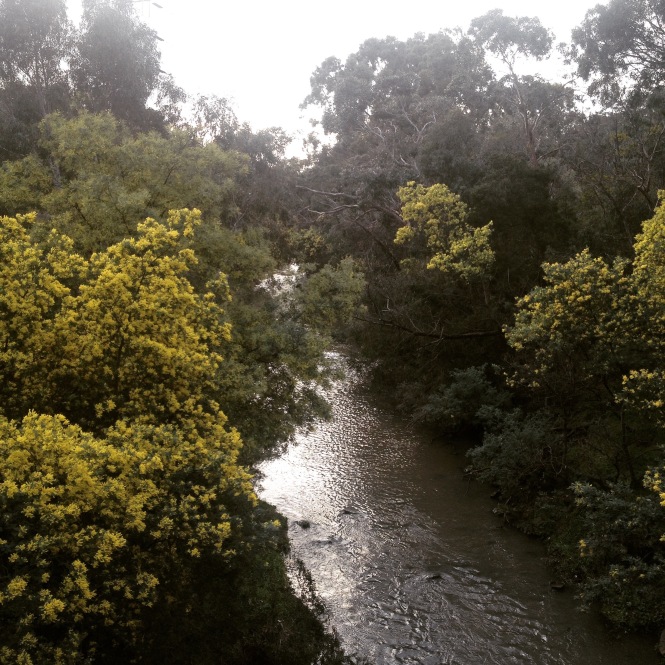Cold days persist. Snow may still fall in the hills and on the tablelands. But as anyone who is spending time in the garden will tell you, things are starting to move. It is pre-spring, that brief period between deep winter and true spring when Muyan, the silver wattle (Acacia dealbata) blooms. The lemon yellow and silvery green of its flowers and foliage are colours bright in my mind’s eye, which I see through still, chill air, beside flooding creeks and rivers. An early plant that stirred me to awe: how I wondered at its flowering amidst the bleakest of days. It is far too large for any garden and is prone to fall apart or just drop dead full of borer, but you might be lucky to see it flowering along the river still. The photograph below was taken along the Yarra River (Birrarung) as it flows somewhere through Kew and Abbotsford. Penleigh Boyd painted this yearly phenomenon further up at Warrandyte and elsewhere. Someone once referred to them as scrambled egg paintings. I can see why.

For if there were any colour that could represent this season, at least in my garden, it would have to be yellow. The first daffodils, the other early flowering wattles, some of the Kniphofias, even the Aeoniums, all send out striking yellow flowers at this time. Less stridently, but still apparent in late July and throughout August, there are primroses and phebalium and bulbinella, all cheerfully proclaiming the season. I lost my primroses during a few hot years when I didn’t water the ornamental garden. I lament their loss, but don’t pine for them. Phebalium squamulosum, the forest phebalium (not much of a common name, I’m afraid), on the other hand, a small shrub native to south eastern Australia, has proven to be much longer lived in comparison. Tucked in amongst Mahonia, Phormiums and Plectranthus, it holds its own against theses bigger brutes; its bronzy foliage waiting quietly for its moment of sunshine: stars bursting from brown buds.

You might not be like me, confusing the native bulbine lily (Bulbine bulbosa) with Bulbinella (Bulbinella spp.). Both members of the Asphodelaceae, they are bright and cheerful and can cope with less than favourable conditions. I am growing the former in a client’s nature strip in Northcote and the latter in my unkempt ‘meadow’ in South Gippsland. Bulbinella is a much showier beast, with more gold in the flower and the composition of the flowers seem to make them vibrate with colour, a stunning display on a smaller scale than a Kniphofia, a plant it usually reminds me of. The little bulbine lily in contrast is a clearer yellow and more modest, but no less delightful, especially amongst the kangaroo grass and the vanilla lilies of a grassy woodland. I hope to grow more of it.

I have grown many wattles over the years, many of them have flourished and passed away. One of my favourites is the sticky wattle Acacia howitii, which lives up to its name having leaves rich with a gum like secretion. I haven’t found it to be very long lived. On the other hand Acacia floribunda, I can’t kill. Even when I chop it down with a chainsaw, it will burst back to life vigorously from whatever stump I leave behind. The most successful wattle in my garden though is the Snowy River Wattle, Acacia boormanii, which has become a relatively long-lived thicket ( it must be about eighteen by now) that shows no sign of weakening. It suckers, hence the thicket, but in such a gentle and unprepossing way. It is probably only a bit over two metres tall where I have it. It comes out a little earlier even than Muyan, a yellow froth of blossom amidst the dark, dark green foliage. A perfect plant to edge a country garden with to provide protection and create a microclimate amenable to more fragile plants within.
So much yellow, it’s hard not to be cheered by it and the lengthening days.

